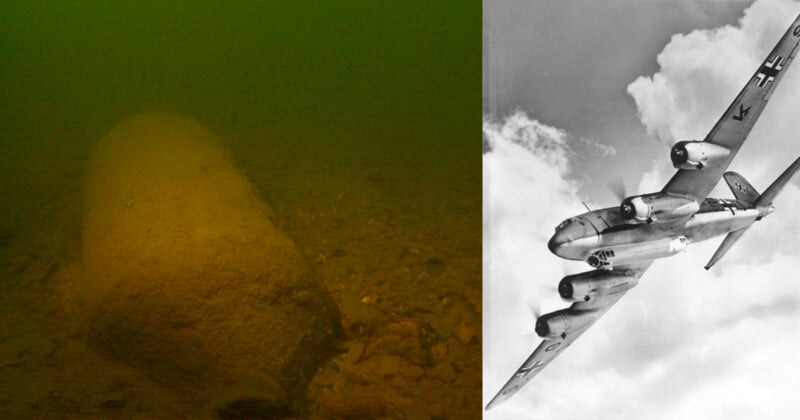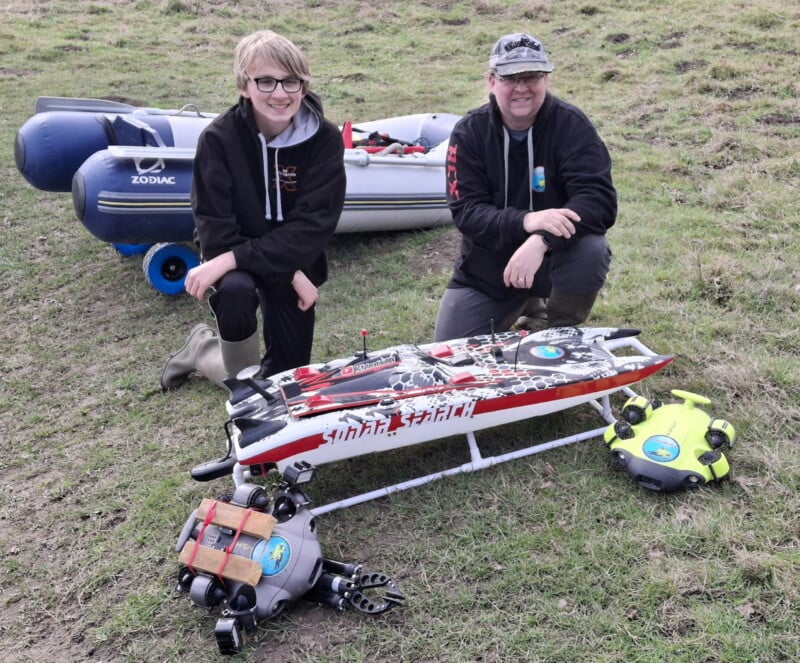Dad and Son Crash Underwater Drone Into Unexploded World War II Bomb

A dad and son exploring an English river with an underwater drone got the shock of their lives when they crashed it into a live World War II bomb.
The unexploded incendiary had been lying beneath the River Ure, Yorkshire, since the 1940s. It is believed to have been dropped by the German Luftwaffe during the Blitz.
Cameron Makewell, 14, and his dad Adam went to the beauty spot early on March 22, 2025, to try out new lighting equipment the pair had recently acquired for their Qysea Fifish, a remotely operated underwater vehicle (ROV).
Dad and son had almost finished and were packing up when Adam told Cameron to “have some fun” while he packed the equipment away.
“I asked Cameron to let me know if he found anything interesting and a couple of minutes later he came to me with what he thought was a gas canister on his screen,” Adam explains. “As soon as I saw it, I knew exactly what I was looking at”.
Adam says he “stayed calm” because he didn’t want to alarm Cameron. Nevertheless, he realized the pair were in danger as they were standing only 160 feet (50 meters) from the 7-foot (two-meter) long shell and they could have been killed, had it gone off.
Adam and Cameron packed up their gear and went to the nearest police station where they were greeted by skeptical officers.
“When I told them they sort of rolled their eyes at me and said ‘Yeah right’,” Adam says. “It wasn’t until I let them watch the footage on my iPad that they took us seriously agreeing it did look bomb-like.”
The cops asked them for all the footage for analysis and later discovered the bomb they had found was a Nazi SC 500 — a bomb commonly dropped during the prolonged raids of British cities by the German Luftwaffe in the winter of 1940/41, better known as the Blitz.

Later that evening, Adam received a call from the police asking if he could assist a Royal Navy bomb squad who were trying to locate the device. He agreed but the next morning the team was unable to locate the bomb since heavy rainfall had lifted the water level by four inches and reduced visibility.
On Wednesday, March 26, the Navy personnel were able to find and detonate the bomb safely — after setting a cordon of almost half a mile (700 meters). The explosion left a crater in the riverbed and killed the fish in the surrounding area.

Adam says the bomb was in a popular area of the lake which was frequently used by local boats, swimmers, and canoeists.
Image credits: Photographs by SWNS/Adam and Cameron Makewell